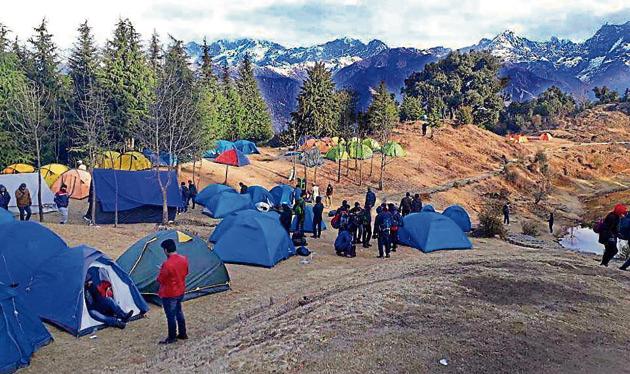Uttarakhand plans to introduce caravans in major spots to boost tourism
The Uttarakhand government also plans to encourage homestay facilities around known tourist spots to attract trekkers and hikers.
To attract more tourists to the scenic spots dotting the picturesque central Himalayan region, the Uttarakhand government will soon introduce mobile caravans or motor homes equipped with all facilities available in a house.

Plans are also afoot to encourage homestay facilities around known tourist spots to attract trekkers and hikers.
“We are working on a plan to introduce fleets of mobile caravans equipped with all facilities available in homes, which will be introduced soon. The scheme aims to attract high-end tourists to a number of scenic spots dotting the mountain state,” tourism minister Satpal Maharaj said.
“Similarly, homestay facilities will be promoted as well as hiking and trekking potential, which also have an identity of their own,” he said.
The twin schemes would help increase tourist arrivals, which would give a boost to the income of the people dependent on tourism activities.
“The homestay scheme also aims to check forced migration from the hills,” the minister said.
Out of the two schemes, he said, the caravan tourism would be new to the hill state, which would help attract both high-end foreign and domestic tourists.
He said tourists would be able to enjoy motor home facilities in hill areas which are connected by roads.
“Each motor home would have sleeping spaces, or berths, a kitchen equipped with an oven, refrigerator and a sink. There will also be an attached toilet that can also be accessed from outside, which makes waste disposal easier,” Maharaj said.
He said separate parks would also be developed in hilly areas where motor homes would be stationed before and after road journeys. “In such parks, all basic facilities such as electricity connection, water supply, waste disposal etc. would also be available for motor homes.”
“Most European countries where motor homes are quite popular have such parks. Similarly, in Nepal, there are open spaces known as ‘Chaugans.’”
“Under the homestay scheme, which aims to check forced migration from the hills, the state would provide all kinds of incentives to develop homestay facilities,” he said adding, that the people in rural areas both in the plain and mountain districts, would be provided commercial loans instead of home loans.
Conversion of agricultural land for commercial purposes had also been made compulsory to promote the homestay scheme.
“We aim to set up 5,000 homestays by the year 2020,” Maharaj said.
He said homestays would be developed around popular spots like Mahavtar Babaji’s Cave in Kanalichina in Almora, the Viceroy Trail in Chamoli, Madmaheshwar, Pancha Badri and Pancha Kedar etc.
“The latter two are also being developed as trekking circuits where helipads would also be set up to make the areas accessible to tourists,” Maharaj said.
Similar facilities would be provided in the proposed ‘Mahabharat circuit’ comprising a large number of areas in the state from Vikasnagar to Pithoragarh, the minister said.
People inhabiting the areas around all such spots would make money not only through their business of homestays but also by providing services as tourist guides for which they would be properly trained.
“They will also be provided financial assistance by the government under two prominent schemes to set up their various businesses,” he said referring to the Chandra Singh Garhwali Payartan Yojna and Gramin Paryatan Yojna.
Those associated with the tourism sector welcomed both the schemes relating to mobile caravan and homestays. “The state government’s move to introduce caravan tourism in the hill state is worth appreciating; it will definitely help attract high-end tourists—domestic as well as foreign,” said Dinesh Shah, a prominent hotelier based in Nainital.
Equally appreciative was Praveen Sharma, a board member of the Hotel and Restaurant Association of Northern India, of the homestay scheme. “It is the best suited scheme, which will help check forced migration from the hills,” he said.






